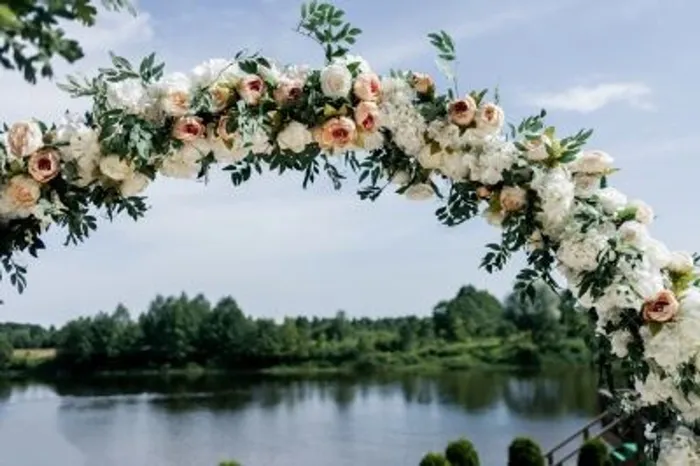These beauties will arch an eyebrow or two

Flowering arches are also excellent wildlife attractors and privacy shields.
Flowering and edible arches are arguably one of the most stylish and elegant features of a garden.
Ideal in large spaces where a focal point of interest is needed, over entrances as a dramatic touch, or in small gardens where a compact cluster of blooms steals the show – arches are full of charm and for everyone.
The dry season – now in most of the country – is time to plan and implement parts of the garden that need construction and preparation for a revamped garden come the rainy and major-growth season.
July is a good time to assess the garden’s “bone” structure.
The natural architecture is pronounced in the colder regions where frost-sensitive plants are covered, roses pruned and deciduous trees and shrubs lay bare in the garden. The revealed core structure of your garden allows you to assess the projects necessary to fix shortcomings and make exciting new changes to the garden. This can include pruning back tree branches to open the view or because they are shading over other plants. It also could include a variety of hard landscaping projects, for example, creating a new stepping-stone pathway to a secluded seating area or an area for an arch.
When planning your arch, it is important to decide what you want to grow on it so you can place it in the ideal spot for the best growing conditions. Does it need full, all-day sun? What about a shadier spot? Remember to factor in soil type when making your choice.

Here are a few important factors to consider when buying or building an arch:
Take careful note of the size of the space where you would like to grow your edible or flowering arch. How much sun does this space receive? Is there enough room for the plant to expand as it grows?
Where will your arch steal the show most and what is your vision? Consider which other accessories will complement the structure such as a cute table and chairs nearby for tea, garden lights along a walkway that lead to the arch, or perhaps an additional flower bed all around the arch. Flowering arches are also excellent wildlife attractors and privacy shields.
What material is your arch made of? Some plants get heavier as they age, requiring stronger support. If using a wooden arch, remember to use a weather-resistant sealer that won’t harm your plant. If you are using a metal arch, remember that extreme weather may also burn/freeze delicate flower varieties.
Can you reach the top of your arch? Pruning your ramblers, scramblers, and climbers is essential to maintaining a nice and neat shape to your arch. Make sure you have a long ladder and access to all sides of the plant for shape pruning. Similarly, if you are growing an edible arch, make sure you have enough space to harvest.
Top arching tip: Train your vines to grow in the shape you want by redirecting straying branches towards the structure of the arch. You may need to lightly tie down some pieces in the beginning to encourage the plant to grow with the arch shape. Pruning is also important so be sure to have a sharp pair of shears on hand.
EDIBLE ARCHES
Kiwi fruit: Plant male plants one side and female on the other side for a successful harvest. The male plant produces flowers, while the female produces both flowers and fruit. Grow plants in full sun where they are protected from wind.

Cherries: Go for the self-pollinating dwarf Lapins variety. Your plant will give you attractive foliage for the first three years before producing fruit. Lapins cherries have a mahogany red skin with a delicious sweet flavour. Plant them in full sun with six to eight hours of sunshine, preferably on the south side of the property.

Granadillas: For a fast grower with gorgeous edible flowers, go for grannies! Known also as purple passion fruit, plants are generally hassle-free and produce a large harvest to share with loved ones. Grow them in full sun with a generous amount of compost and deeply lessened soil.

Try these too: Cross-pollinating apples: Plant Early Red on one side and Granny Smith on the other side. Also, go for annual veggies such as cucumber and squash.
FLOWERING ARCHES
The “Rhapsody in Blue” rose: The deep royal blue-purple of this rose marks a genuine new colour in roses. This lovely is an upright growing shrub rose bearing clusters of semi-double blooms that open to reveal a glowing centre of golden yellow stamens. They have a spicy fragrance and love to climb in full sun with nutritious soil.

Wisteria: Here’s another fast grower with extra bold blooms (that become very heavy). Wisteria flowers are beautifully fragrant, providing a feasts for the senses. After flowering, a brown, bean-like pod stays on the plant until winter. Plant them in full sun and be sure to prune frequently as flowers only grow on new growth.

Jasminum polyanthum: Evergreen, sweetly scented and fast-growing jasmine is an all-time favourite. Grow them in full sun or dappled shade where they are protected from frost. Avoid heavily shaded areas because the plant is unlikely to flower and will become leggy. Enjoy their heavenly scent and all the friendly garden visitors.

Try these too: Clematis are exotic treats and will create a moody atmosphere with their large purple blooms.
Now that you have some exciting ideas on arches, get planning and building yours to raise some eyebrows.

Independent on Saturday
Related Topics: